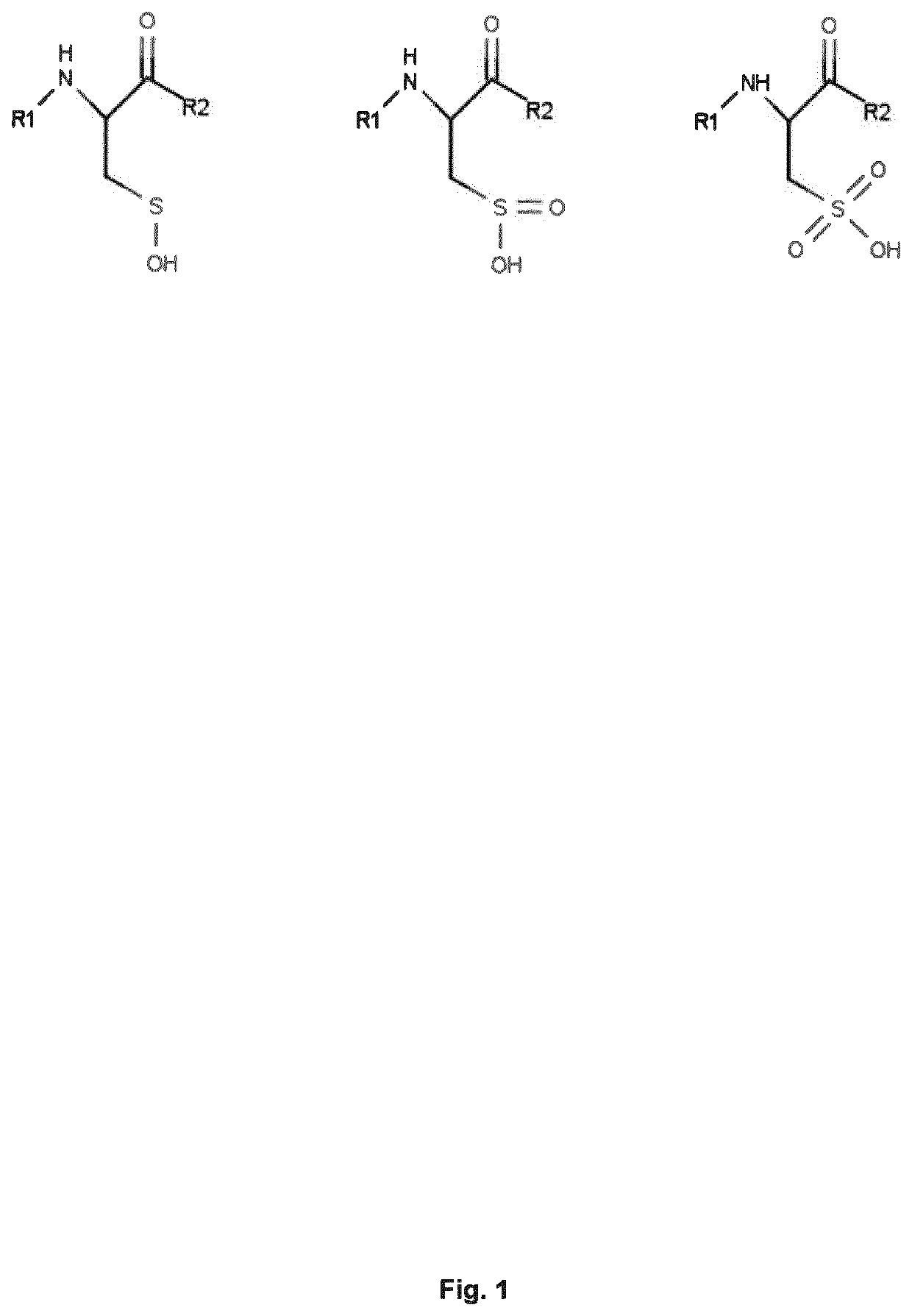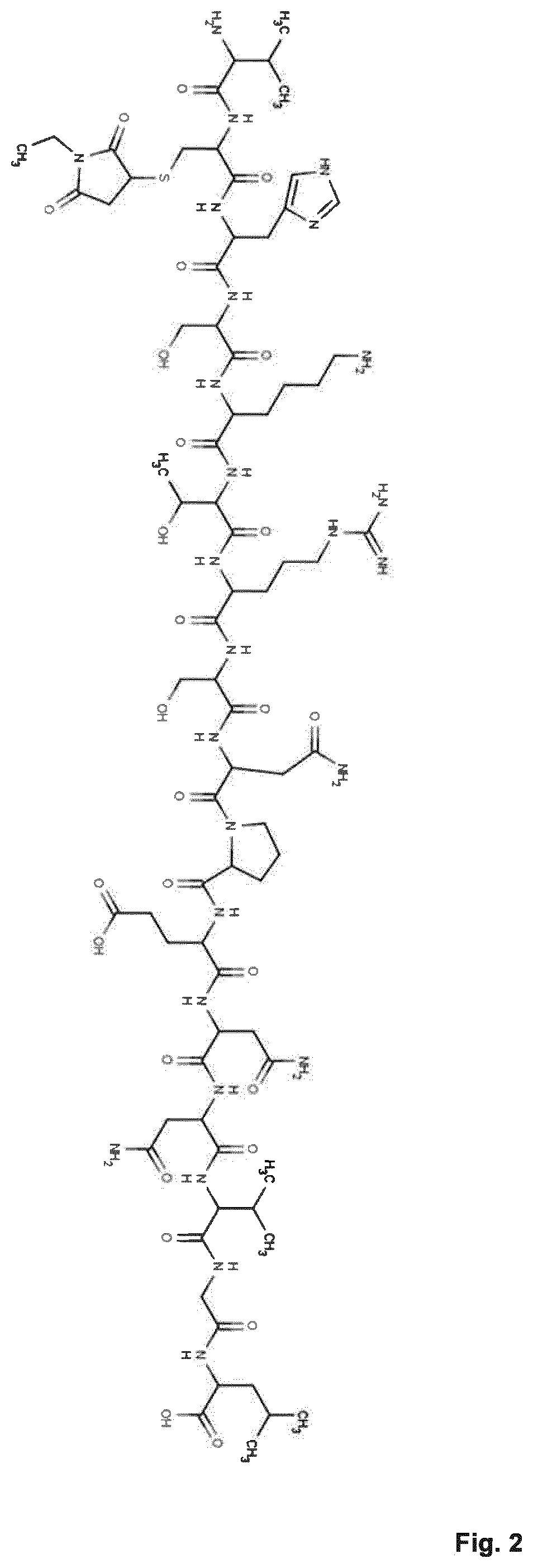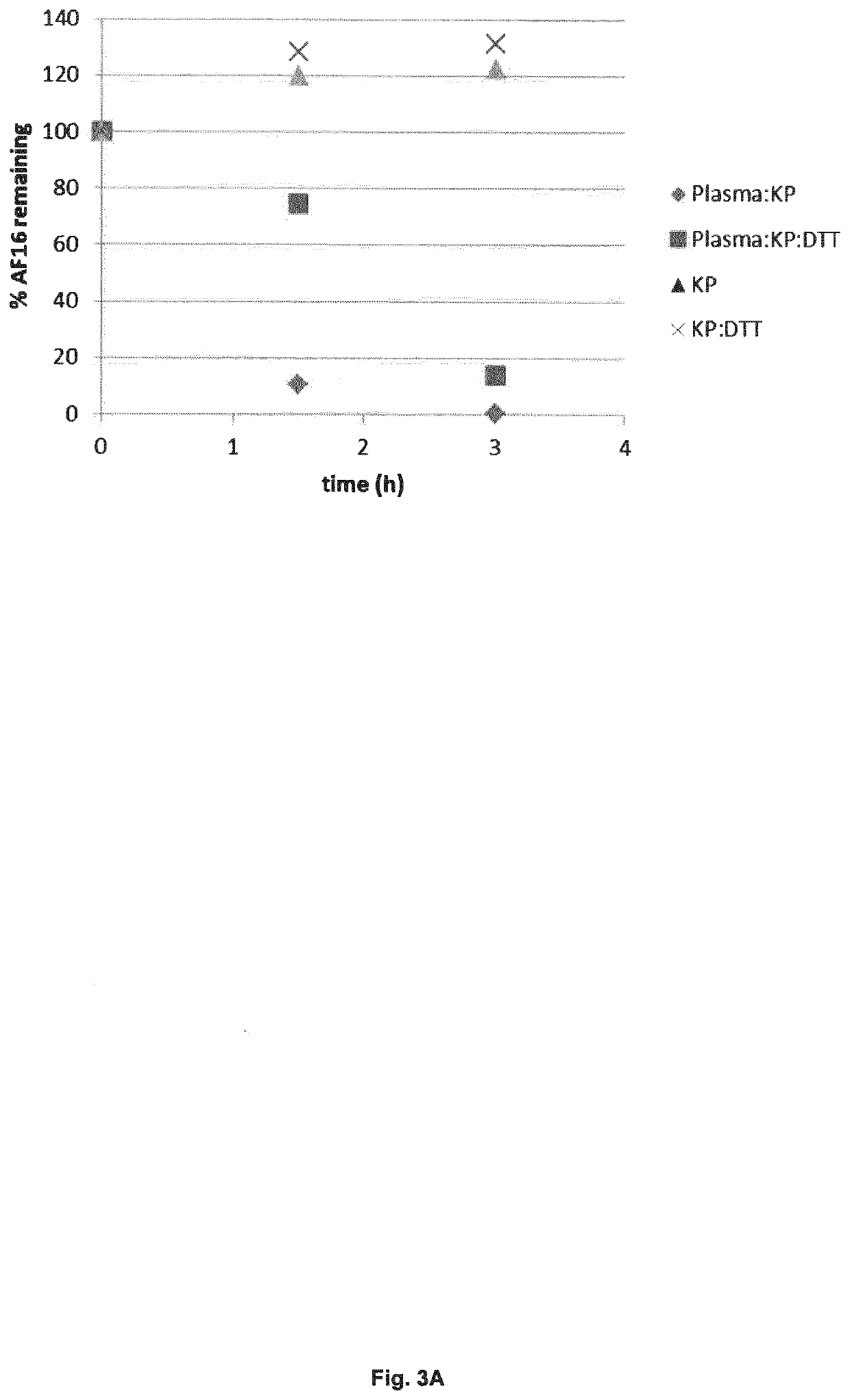Antisecretory Factor 17
a technology of secretory factor and anti-secretory protein, which is applied in the field of protein complexes, can solve the problems of having a very short half-life in the body of patients once administered, and achieve the effects of improving monitoring means, relative stability of af16, and improving in vitro half-life (t1/2)
- Summary
- Abstract
- Description
- Claims
- Application Information
AI Technical Summary
Benefits of technology
Problems solved by technology
Method used
Image
Examples
example 1
[0112]The effect of the peptide fragment of antisecretory factor protein (AF16) is fairly well studied in various pharmacological setups by several groups. The majority of studies have focused on the pharmacologic / physiologic effect of the protein or peptide. There are however fewer reports that deal with the pharmacokinetic viewpoint of AF16. Thus, all the testing in various matrices has assumed that AF, or presumably the added peptide fragment thereof, is the molecular species that is causing the effect. Previous studies in other labs have in fact indicated that AF or AF16 is sensitive to degradation in e.g. human or rodent plasma but no detailed investigation have been performed.
[0113]This experiment summarizes efforts in understanding the in vitro pharmacokinetics and the molecular fate of the AF16 peptide in both human pooled plasma but also in presence of Caco-2 cells, which is commonly used in AF16 pharmacological studies.
Materials and Methods
Materials
[0114]Solid material of ...
example 2
AF16: Plasma In Vitro Stability and Metabolic Fate
Introduction
[0136]This experiment summarizes the latest findings on interspecies (human, mouse, rat and dog) plasma kinetics and the qualitative catabolism / metabolism of AF16 in human and rat plasma.
Materials and Methods
Materials
[0137]Solid material of AF16 and the stable isotopically labeled (SIL) AF16 IS was provided by Lantmännen AB. According to information provided by Ewa Johansson at Sahlgrenska Hospital, the peptide is approximately 70% in purity, other components being 4× trifluoroacetic acid (TFA) and unknown x H2O. However, for the sake of simplicity, all concentrations regarding the peptide are considered to be 100%. This assumption does not influence the results presented herein, since they are compared on a relative basis. Human pooled plasma (4 donors, 2 male and 2 female, nonsmokers) were obtained from the academic hospital. Animal plasma was from Novakemi AB. All other chemicals and consumables were from common commer...
example 3
[0156](AF-17) is synthesized to be able to accurately quantify in vitro / in vivo but also to study the in vitro pharmacokinetic properties in general and to be used in pharmacological studies.
[0157]Biological activity of AF-17—The antisecretory activity was measured in a rat intestinal loop model previously described (Lange, S. (1982) FEMS Microbiol. Lett. 15, 239-242). A jejunal loop was challenged with 3 pg of cholera toxin. Different doses of synthetically produced AF-17, AF-16 or control (=no peptide, only buffer (XY)) was injected either intravenously or intramuscular, before challenge with cholera toxin. The weight of the accumulated fluid in the intestinal loop (mg / cm (mg / ml)) was recorded after five hours. Each AF preparation was tested in at least six rats. Fisher's PLSD was used for statistical analysis of the data.
[0158]Biological activity of AF-17—The biological activity of the AF-17 was tested in a rat model. The capacity of the AF-17 to inhibit intestinal fluid secretio...
PUM
| Property | Measurement | Unit |
|---|---|---|
| Time | aaaaa | aaaaa |
| Time | aaaaa | aaaaa |
| Time | aaaaa | aaaaa |
Abstract
Description
Claims
Application Information
 Login to View More
Login to View More - R&D
- Intellectual Property
- Life Sciences
- Materials
- Tech Scout
- Unparalleled Data Quality
- Higher Quality Content
- 60% Fewer Hallucinations
Browse by: Latest US Patents, China's latest patents, Technical Efficacy Thesaurus, Application Domain, Technology Topic, Popular Technical Reports.
© 2025 PatSnap. All rights reserved.Legal|Privacy policy|Modern Slavery Act Transparency Statement|Sitemap|About US| Contact US: help@patsnap.com



